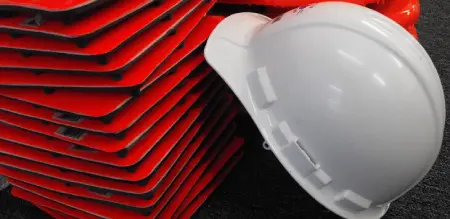
On the job, chances are you encounter potential falling, flying, rolling, and swinging objects multiple times a day. Ideally, your workplace should be free from these hazards. Unfortunately, in many cases, it’s not possible to completely eliminate these kinds of hazards. Keep reading to learn what to do if a hard hat sustains impact, what OSHA hard hat color codes are, and the different types of hard hats.
Your employer will provide you with hard hats to protect your noggin from these dangers. Now, we know that they aren’t the most comfortable to wear. You’ve probably thought to yourself that it’s too hot, heavy, or silly looking at least once. Believe it or not, these simple hats can save your life.
If a hard hat sustains impact, it should…
Be replaced! That’s right; hard hats are designed to protect your noggin from a single impact. After that, they are no longer able to adequately protect you and it’s time to get a new one.
While you’re inspecting your hard hat before each shift, don’t forget to look for any cracks, holes, tears, or UV damage. Any signs of damage warrant that you replace your hard hat.
What are the OSHA hard hat color codes?
Though there are a lot of hard hat colors out there, OSHA does not actually regulate hard hat colors. There are some industry-recognized hard hat color codes. For example, white hard hats are usually worn by supervisory employees and yellow hard hats are worn by general construction employees. (Hard Hat Expert) But overall, the color of your hard hat shouldn’t matter as much as the specifications.
Hard Hat Specifications
Industrial hard hats are classified according to class and type. Class G hard hats are used to protect you from penetration and impact. Hard hats that are Class E protect you from high voltage shocks and burns. Class C hard hats will protect you from lightweight impacts. Then, Type 1 hard hats only protect from impact coming from above. Type 2 hard hats protect from above, the rear, front, and sides.
Never neglect to don a hard hat on the worksite when work requires it. A hard hat can be the difference between disaster and survival in many accidents.
For more information on hard hats, check out our training on PPE.
Good luck and stay safe!
